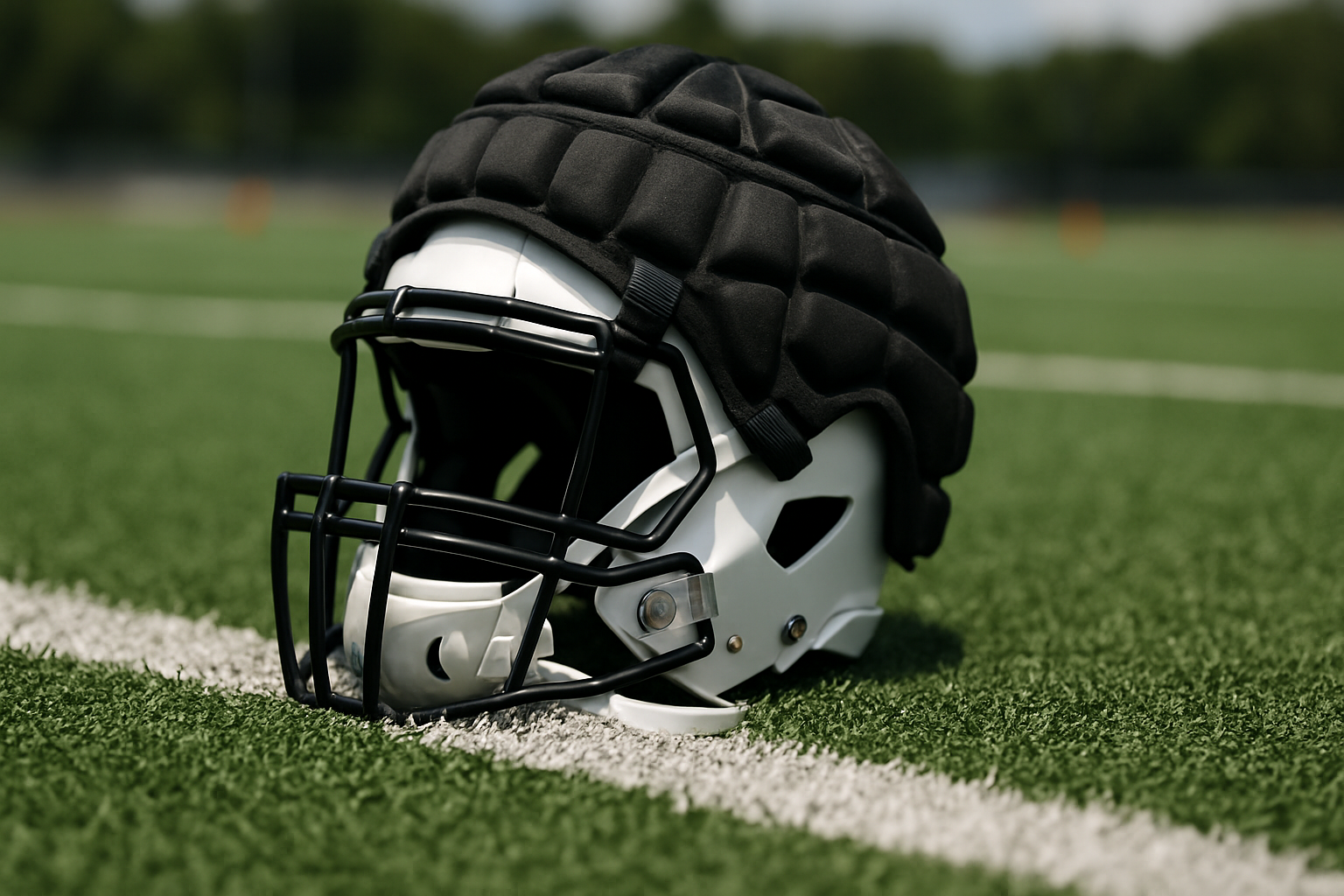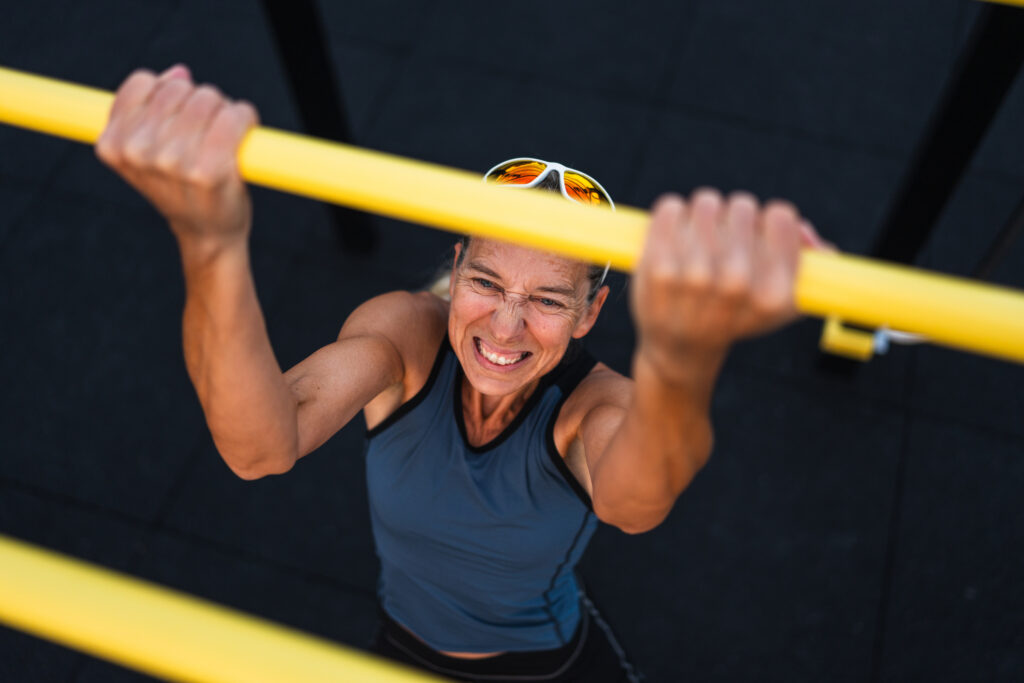Over the last two decades or so, head impacts and concussions sustained during sports, especially football, have become a key safety issue. What are the implications of multiple concussions? How many head impacts are too many? Even if an impact doesn’t cause a concussion, could it be causing harm to the brain? How hard is too hard? The seemingly endless questions about football safety have led to changes in policy, rules, tackling techniques, and equipment. Despite some level of safety improvement, clinicians and researchers continue seeking ways to minimize head impacts.
Recently, there has been a dramatic increase in the use of Guardian Caps in football. These foam covers slide over a traditional football helmet and are intended to provide an extra layer of cushion to soften the blow of the head impacts sustained during football. Over the last few years, the National Football League (NFL) mandated Guardian Cap use by most players during practices while allowing optional use during games. Anecdotally, this mandate has brought the Guardian Cap to the general public’s attention, which has increased use across all levels of football, from college to youth leagues. But does adding additional foam padding to a football helmet really help reduce impact forces?
In controlled laboratory environments, the answer is not clear. Several studies have used high-fidelity instrumented headforms (such as crash-test-dummy heads) to test impact forces when a Guardian Cap is used relative to when the helmet is impacted alone. Some studies show that the Guardian Cap reduces impact forces by about 25%, while others found minimal to no reduction. Generally, laboratory results have varied considerably based on factors such as helmet type, impact location, and impactor testing procedures.
But football is not played in a laboratory. Football players are hit from all angles, wear many different types of helmets, and bring their own unique styles of play. Understanding how the Guardian Cap works during play is critical so clinicians and organizations can make informed decisions about purchasing and implementing Guardian Caps. Using instrumented mouthguards that directly measure head impact magnitude, we sought to characterize the Guardian Cap’s ability to affect head impacts during college football practices. Specifically, in our study published in the November 2025 issue of Medicine & Science in Sports & Exercise®, we measured over 7,500 on-field head impacts, 1,379 of those occurred while players were wearing a Guardian Cap. Football players that wore the Guardian Cap were hit in the head the same number of times and with the same level of force as players that did not wear the Guardian Cap. We did observe interesting but preliminary head impact location findings, where those who wore a Guardian Cap were less likely to sustain impacts to their facemask and more likely to sustain impacts to the back of their helmet compared to their counterparts who did not wear Guardian Caps.
The key take-away from our work was that the Guardian Cap did not reduce impact forces. While our study measured a significantly greater number of head impacts than previous studies in this area, our findings agreed with published on-field data, suggesting the Guardian Cap may be limited in its ability to decrease head impact force. However, more research is needed with more players to draw final conclusions about the Guardian Cap’s ability to reduce head impact forces.
Importantly, players wearing the Guardian Cap did not sustain head impacts of higher forces either. There could be underlying positives associated with Guardian Cap use that we did not measure. For example, players wearing Guardian Caps and seeing others do the same could contribute to a sense of sport safety and an acknowledgement that brain health is vitally important. It is possible that the presence of highly visible prevention approaches, such as the Guardian Cap, could help improve concussion symptom reporting, which could have huge positive sport safety implications given as many as 50% of concussions go unreported.
Regardless, far more work is needed to fully understand the impact (pun intended) of Guardian Cap use. Sports should be accessible to everyone, but researchers, clinicians, and policy makers should never stop looking for ways to improve sport safety.

Rob Lynall, PhD, ATC, is an associate professor in the Department of Kinesiology at the University of Georgia (UGA). He completed five years of active-duty service in the United States Marine Corps in 2007 and received his PhD from the University of North Carolina at Chapel Hill in 2016. Dr. Lynall co-directs the UGA Concussion Research Center and the UGA Biomechanics Laboratory. His research interests include functional movement and motor control following concussion and the biomechanics of head trauma.

Julianne Schmidt, PhD, ATC, is a Georgia Athletic Association Endowed Professor in Education in the Department of Kinesiology at the University of Georgia. Dr. Schmidt co-directs the UGA Concussion Research Center. Dr. Schmidt’s primary research interest is the clinical continuum of concussion. More specifically, her research focuses on biomechanics of sport-related concussions and head impacts, concussion care seeking, and post-concussion evaluation and management techniques.




